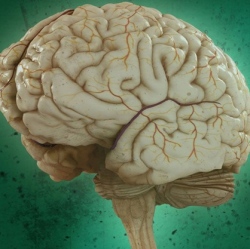
Research has identified a novel learning and memory brain network, dubbed the Parietal Memory Network (PMN), that processes information based on whether it’s something experienced previously or if it’s unknown, helping us recognize, for instance, a face is that of a friend or a stranger.
The study pulls together evidence from multiple neuroimaging studies and methods to demonstrate the existence of this previously unknown and distinct functional brain network, one that appears to have broad involvement in human memory processing.
“When an individual sees a novel stimulus, this network shows a marked decrease in activity,” said Adrian Gilmore, first author of the study and a fifth-year psychology doctoral student at Washington University. When an individual sees a familiar stimulus, this network shows a marked increase in activity.”
The new memory and learning network shows consistent patterns of activation and deactivation in three distinct regions of the parietal cortex in the brain’s left hemisphere, the precuneus, the mid-cingulate cortex, and the dorsal angular gyrus.
Activity within the PMN during the processing of incoming information (encoding) can be used to predict how well that information will be stored in memory and later made available for successful retrieval.
Researchers identified interesting characteristics of the PMN by analyzing data from a range of previously published neuroimaging studies. Using converging bits of evidence from dozens of fMRI brain experiments, their study shows how activity in the PMN changes during the completion of specific mental tasks and how the regions interact during resting states when the brain is involved in no particular activity or mental challenge.
This study builds on research by Marcus Raichle, MD, the Alan A. and Edith L. Wolff Distinguished Professor of Medicine, and other neuroscience researchers at Washington University, which established the existence of another functional brain network that remains surprisingly active when the brain is not involved in a specific activity, a system known as the Default Mode Network.
Like the Default Mode Network, key regions of the PMN were shown to hum in a similar unison while the brain is in relative periods of rest. And while key regions of the PMN are located close to the Default Mode Network, the PMN appears to be its own distinct and separate functional network, preliminary findings suggest.
